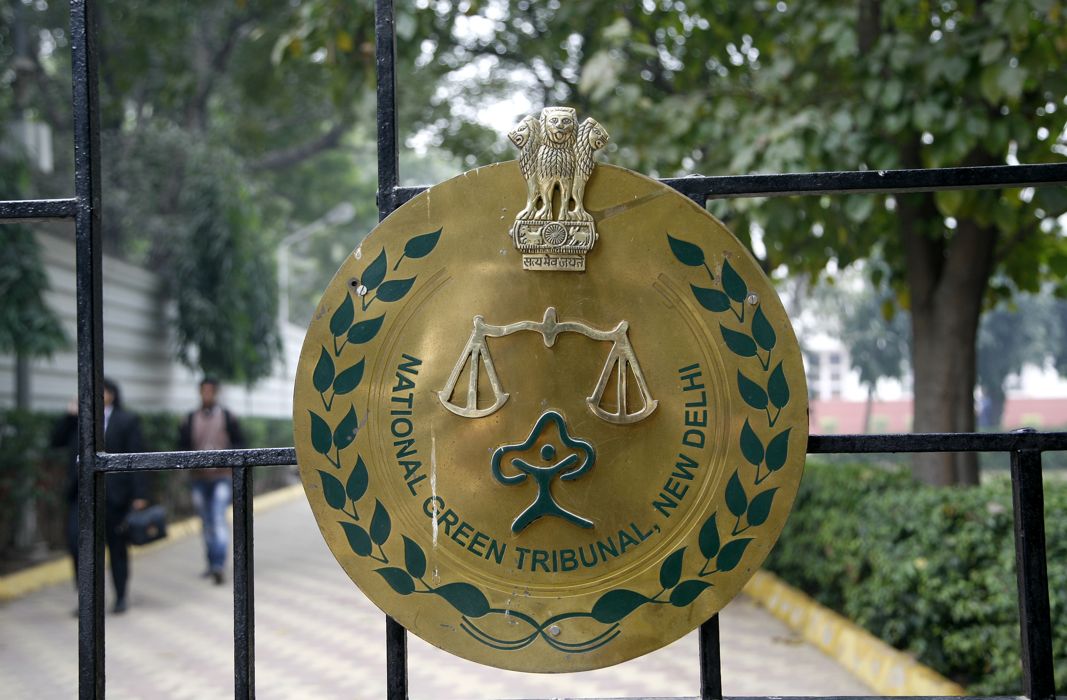New Delhi (ILNS): “Environmental rule of law need not be considered to be in conflict with the need for development, but a facet of development. The development has to be sustainable and the light of principles which the country has accepted in the form of the frame work of legislation and best environmental practices,” observed the NGT while passing directions to MoEF&CC to look into issue concerning Environmental Clearance (EC) to projects.
The Court was hearing the plea filed by Md. Hayath Udin against order dated 22 December 2017 of the Ministry of Environment, Forest and Climate Change (MoEF&CC) granting Environmental Clearance (EC) for Kaleshwaram Lift Irrigation Scheme (KLIS) project in Karimnagar District of Telangana by Irrigation & Command Area Development (I and CAD) Department, Government of Telangana.
The Project envisages construction of three barrages between Yellampally & Medigadda that is Medigadda Barrage, Annaram Barrage, Sundilla Barrage, budget costing of Rs.80499.71 crores. The project envisages diversion of water from Godavari for Irrigation purpose, stabilization of existing command area, drinking water to Hyderabad, drinking water to en route villages and for industrial uses.
A bench headed by the Chairperson Justice Adarsh Kumar Goel, Justice S. P. Wangdi & Dr. Nagin Nanda noted, the project is predominantly for Irrigation though water supply is also involved. Plea to the contrary is untenable. Thus, the EC has been granted ex post facto in violation of legal requirement for prior EC. Question is what consequences follow in the facts of the present case.
The Court said, “the MoEF&CC has not, in granting EC, gone into the issue whether the project had been substantially constructed without prior EIA and in the light of such factual position, what further safeguards were required and how the project proponent is be held accountable for violation of law and presenting fait accompli. Mere plea that the project was multi-purpose project and also had a component for which EC may not be required, was not sufficient for the project proponent to have gone ahead without the impact assessment and it is on that account that an injunction was issued by this Tribunal and by the High Court. Since we have found that there is major infirmity in EC being sought ex post facto, it is not necessary to go into other points. The fact remains that the project has been completed and only issue is of remedial action and future precautions.”
“We find that undoubtedly the project seeks to provide drinking water to the needy people and irrigation facilities to improve agricultural productivity which serves public interest. Also huge amount of public money has been spent. At the same time, it is not necessary that for such development, damage to environment must be ignored and adequate safeguards are not to be adopted. Environmental rule of law need not be considered to be in conflict with the need for development but a facet of development. The development has to be sustainable and the light of principles which the country has accepted in the form of the frame work of legislation and best environmental practices,” said the Court.
According to the appellant, there were certain objections pointed out against the project such as the infrastructure was being constructed prior to applying for Environmental Clearance. The project proponent wrongly claims that the project was not for lift irrigation but only for drinking water supply till grant of Environment clearance. The application for EC (environmental clearance) was made only January, 2017. EC (environmental clearance) was granted in December, 2017 but before that substantial work had already been undertaken. EIA Notification (Environment Impact Assessment) procedure was not followed in making draft EIA report available to public. The baseline data was not properly conducted as winter season data was left out. The EC (environmental clearance) condition of impact being studied after five years of commissioning is against the Precautionary principle. There is concealment of material facts including existence of protected areas within 10 km. of the site without wildlife clearance. It is wrongly mentioned that Cheetahs existed. The extent of forest has not been properly mentioned. The area is Seismic Zone –2 which was also not mentioned. There was no proper appraisal of the project.
Read Also: The pattern in the method: the curious case of a Chief Minister’s letter
Accordingly , on 12 October 2020 the tribunal directs the MoEF&CC ( Ministry of Environment, Forest and Climate Change) to constitute a seven-member Expert Committee going ahead with the project without Environment clearance and identify the restoration measures necessary and Relief and Rehabilitation measures adopted may also be looked into it. Beyond submitting that there is damage to the environment on account of the project having been executed without prior Environment clearance , there is no tangible material before the Tribunal on the basis on which a specific direction for mitigations, restoration and rehabilitation measures can be directed. This exercise was expected from the experts recommending and the authorities granting Environment clearance. The project proponent should have been held accountable for the violations. This exercise may have to be undertaken now to enforce the rule of law.
Read the judgment here;
jugdment-telangana-1


This is a wonderful news to get bloggers. It opens entry to a large spectrum of those people who are finding a location to style their issues. With ones theme, I can gain your visibility I am having at present. Thanks for this purpose informative publish, I learned lots!